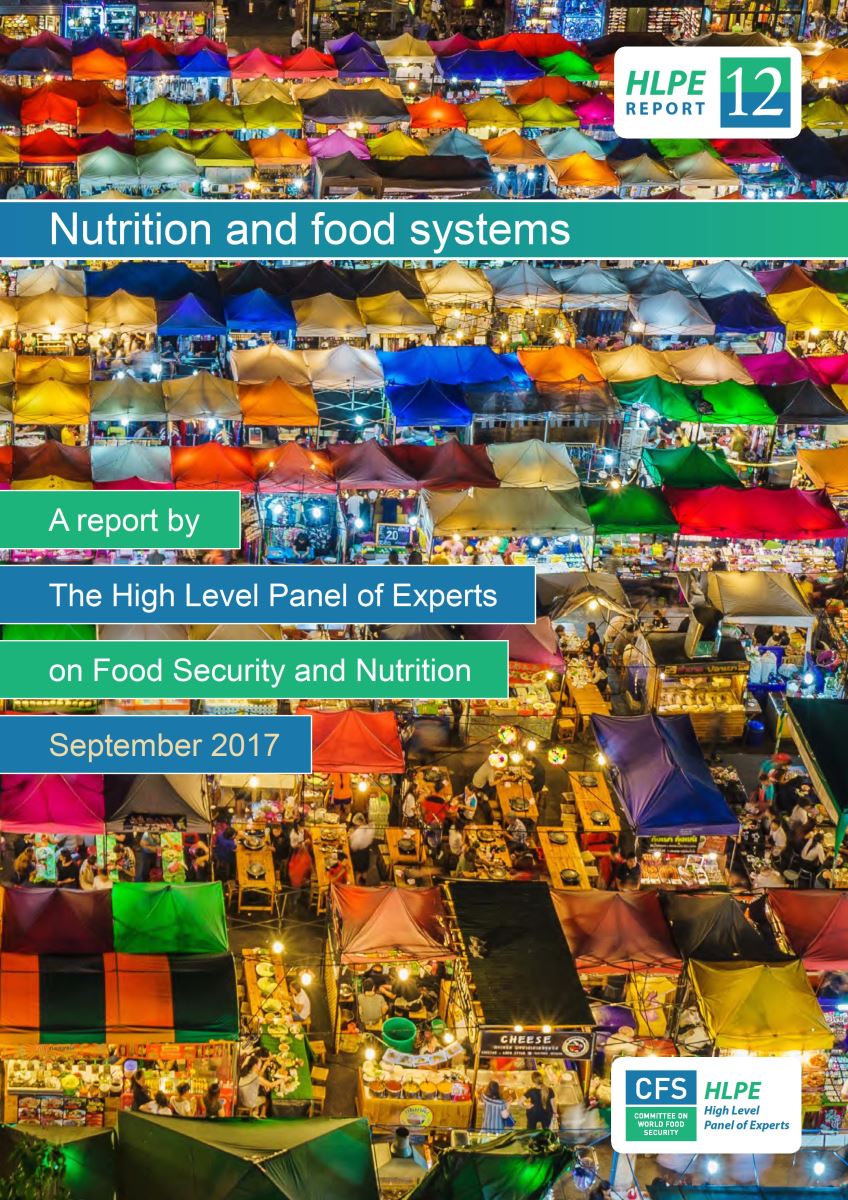Publication date:
14 | 07 | 2024
The report provides a comprehensive overview of the current state of nutrition and food systems, offering proposals and strategies to improve global health and nutrition.

Introduction
The 2017 report by the High Level Panel of Experts on Food Security and Nutrition (HLPE) focuses on the relationship between nutrition and food systems, emphasizing the need for policies and strategies to improve global nutrition.
Concepts and Approaches
The report uses a conceptual framework that includes three main components of food systems:
-
Food supply chains: involving the production, processing, distribution, and retail of food.
-
Food environments: the economic, social, and cultural contexts in which consumers interact with the food system.
-
Consumer behavior: how consumers choose and consume food.
The Diverse Burden of Malnutrition
The report highlights that malnutrition affects all countries in various forms:
-
Undernutrition.
-
Micronutrient deficiencies.
-
Overweight and obesity.
Dietary Transitions
Diets are changing due to factors such as urbanization, globalization, and economic shifts. Future projections indicate an increase in the consumption of unhealthy foods without timely intervention.
Drivers of Change in Food Systems
The report identifies physiological, environmental, technological, political, economic, cultural, and demographic factors as key drivers influencing food systems. Climate change and humanitarian crises also play significant roles.
Positive Directions for Food Systems, Diets, and Nutrition
The report outlines priority actions:
-
Improving food supply chains: from production to consumption.
-
Creating conducive food environments: ensuring physical and economic access to healthy, safe food.
-
Changing consumer behavior: through nutrition education and altering social norms.
Turning Evidence into Action
The report emphasizes the importance of building supportive political environments, investing in nutrition and food systems, developing human capacity, and supporting new movements, networks, and partnerships.
Conclusion
Addressing global malnutrition requires more sustainable food systems and interdisciplinary nutrition strategies. This demands the involvement of governments, the international community, and other stakeholders.
Fulltext